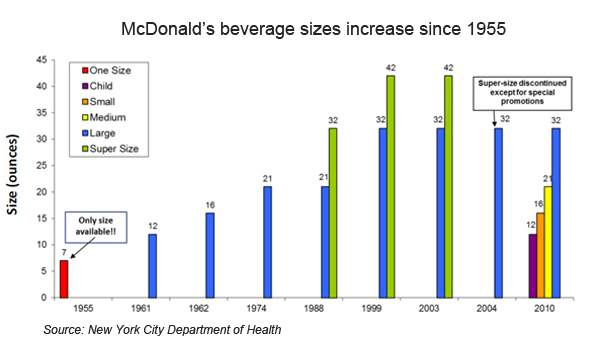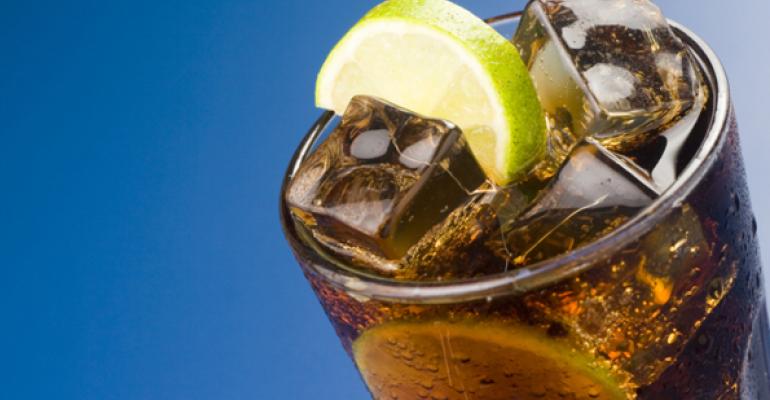Don’t be too pleased that a New York City judge just nixed Mayor Michael Bloomberg’s supersized soda ban. New research shows the proposed rule—no drinks bigger than 16 ounces could be sold—would have likely increased restaurant revenue in the lucrative beverage category.
That’s the upshot of Regulating the Way to Obesity: Unintended Consequences of Limiting Sugary Drink Sizes. This aptly named study is the work of three University of California San Diego researchers: Brent Wilson, Stephanie Stolarz-Fantino and Edmund Fantino. It appears online in PLOS ONE, an open access, peer-reviewed scientific journal published by the Public Library of Science.
The UCSD trio conducted a behavioral simulation experiment in which research subjects were given menus that offered one of three different drink-size options. One, dubbed the “unregulated” menu, gave the choice of purchasing 16 oz., 24 oz. or 32 oz. drinks. Choices on the second, designated as the “bundle menu type,” were 16 oz. drinks, a bundle of two 12 oz. drinks or a bundle of two 16 oz. drinks. The only option on the third or “no bundle” menu was for a 16 oz. drink.

The results: the bundle menu—i.e., the kind many restaurants would immediately put in place were a ban on selling supersized large soda drinks to become law—resulted in more ounces of soda being purchased, hence creating more revenue for the restaurant operator.
Here’s how the researchers interpret the results:
“These data suggest that a sugary drink restriction may not be effective in reducing consumption when businesses are able to sell bundles of soda that add up to the original, larger drink sizes. Proponents of the New York City sugary drink limit are likely anticipating only the small 16 oz. size being offered, with the medium and large sizes being eliminated from the menu. They may, therefore, be concerned if businesses convert their jumbo-sized sugary drinks into multiple, smaller packages of sugary drinks.
“In our experiment, businesses had an average revenue of $1.69 when they offered drink bundles but an average revenue of $1.02 when only 16 oz. drink sizes were offered. These results show that businesses should earn significantly more revenue when bundles are offered than when small drink sizes alone are offered. This means restaurants have a strong incentive to convert their original-sized drinks into bundles so they do not lose a major source of revenue.”
We don’t know that this experiment provides conclusive evidence that Mayor Bloomberg’s supersized soda ban is misguided. But it does suggest that if you want to fight obesity and diabetes, limiting serving sizes of beverages sold in restaurants may not be the best way to go.
So is the big drink ban fight over? Probably not, but it seems ban proponents will have to come up with a strategy that makes more sense in the real world if they hope to eventually prevail.





